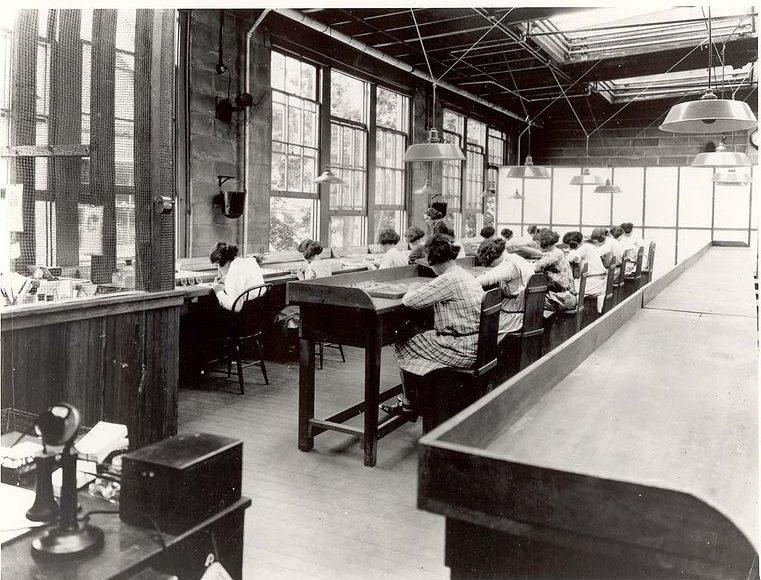In 1922, middle-aged bank teller Grace Fryer’s teeth began to loosen and fall out for no apparent reason. Her jaw swelled up, and she soon took herself to the dentist. The dentist took an X-ray and found her jaw honeycombed with holes. Within a short frame of time, similar cases popped up around town. A pattern was quickly discerned: all of the women were previously employed at the same watch-painting factory. The paint used? Undark.
Undark was used to create the first luminescent watch hands. The solution for Undark was composed of radium-barium carbonate from radium salt crystals, zinc sulfide, and linseed oil (which acts as glue). The zinc sulfide glowed in the presence of the radium salt, making the solution the world’s first glow-in-the-dark paint. Undark was used in house numbers, pistol sights, light switch plates, and most commonly of all, watch hands.

What makes this story horrifying is the paint’s effect on the factory workers, known as Radium Girls. What makes it despicable is that Undark’s makers, U.S. Radium, knew of the effects Undark had on people. Undark’s crucial ingredient was one million times more active than uranium. They distributed this information among the medical community. U.S. Radium’s chemists dressed appropriately, wearing lead screens, masks, and tongs when handling Undark. The employees in the U.S. Radium factory, however, wore no protective gear. They were completely uninformed about its deleterious effects.

U.S. Radium Girls at the New Jersey factory in 1922.
One of the jobs of the factory workers was to carefully paint watch hands and dial numbers with Undark. The process required great delicacy, so fine-tipped brushes were used. After a few strokes, the fine bristles became bent. Supervisors instructed the women to use their lips and tongues to reform the brush’s shape – yes, the same brush that was handling a substance one million times more active than uranium. To make matters worse, the girls would often paint their fingernails or even teeth with Undark to surprise their significant other after work. As late as 1987, the Radium Girls’ graves could still be located using geiger counters.
The Radium Girls’ case helped form U.S. labor laws. Radium was used until 1968, but safer labor laws meant that no factory worker ever suffered the same fate as any of the Radium Girls.
Inspiration for the post.
Get More Articles Like This in Your Inbox
We're constantly creating great content like this. So, why not get it delivered directly to your inbox? By subscribing you agree to our Privacy Policy but you can unsubscribe at any time.






